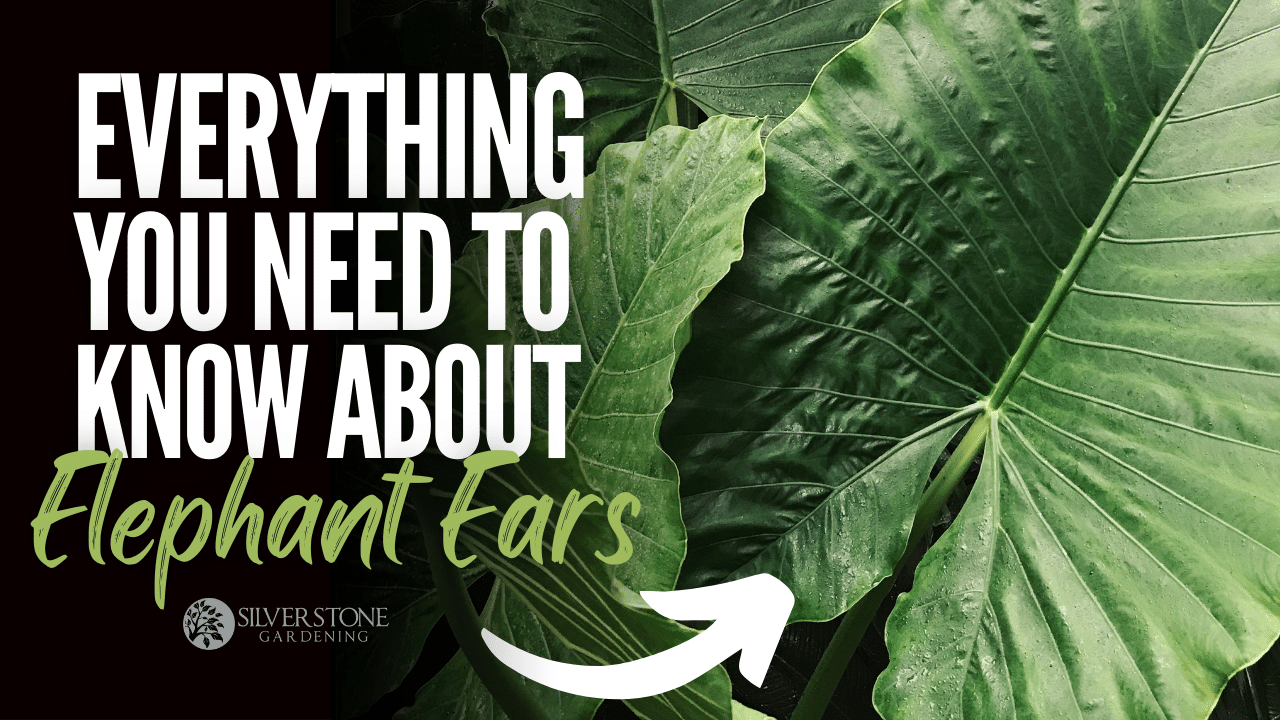
Varieties of Elephant Ears – Alocasia
Alocasia, colloquially known as Elephant Ears, is a diverse family of plants with over 80 intriguing varieties, each boasting unique shapes and sizes. From the whimsical Alocasia ‘Polly’ to the striking Alocasia ‘Amazonica,’ these plants offer a plethora of choices for garden enthusiasts.
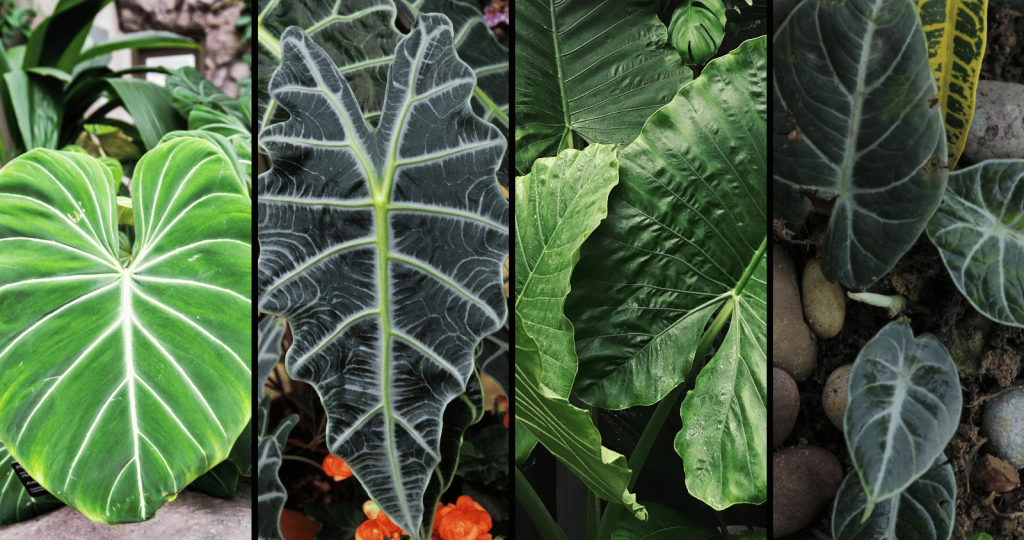
Ideal Growing Conditions
Soil, Sun, and Weather Preferences
Soil Magic: Elephant Ears prefer a well-draining, nutrient-rich soil that retains moisture without becoming waterlogged. Adding organic matter, like compost or well-rotted manure, to your garden bed can create a cozy home for these plants.
Sunshine Ballet: While these tropical beauties enjoy basking in filtered sunlight, they are not fans of harsh, direct rays. Optimal conditions include dappled shade or partial sun, protecting them from the intensity of midday sunlight.
Warm Hugs: Elephant Ears thrive in warm and humid climates. In Australia, varieties like Alocasia ‘Regal Shield’ and Alocasia ‘Amazonica’ are popular choices, embracing the country’s favorable climate.
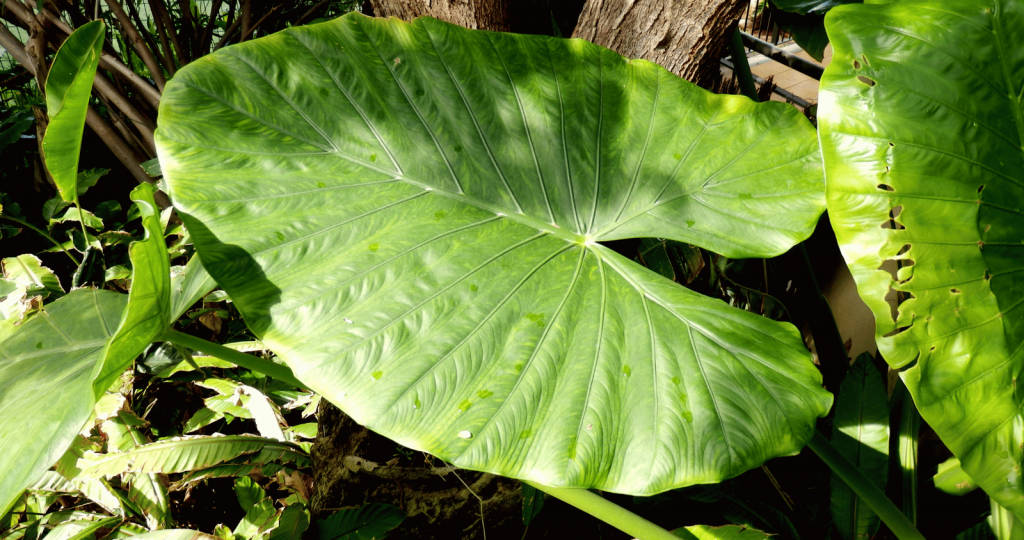
Size and Appeal of Elephant Ears (Alocasia)
The allure of Elephant Ears lies not only in their impressive size but also in the dramatic foliage they unfurl. With leaves resembling the ears of an elephant, these plants can reach heights of up to 2 meters. This creates a captivating focal point in your garden. This is especially true for indoor plants.
It is rare to find large plants that thrive in indoor settings. It’s the very reason Alocasia has become very popular.
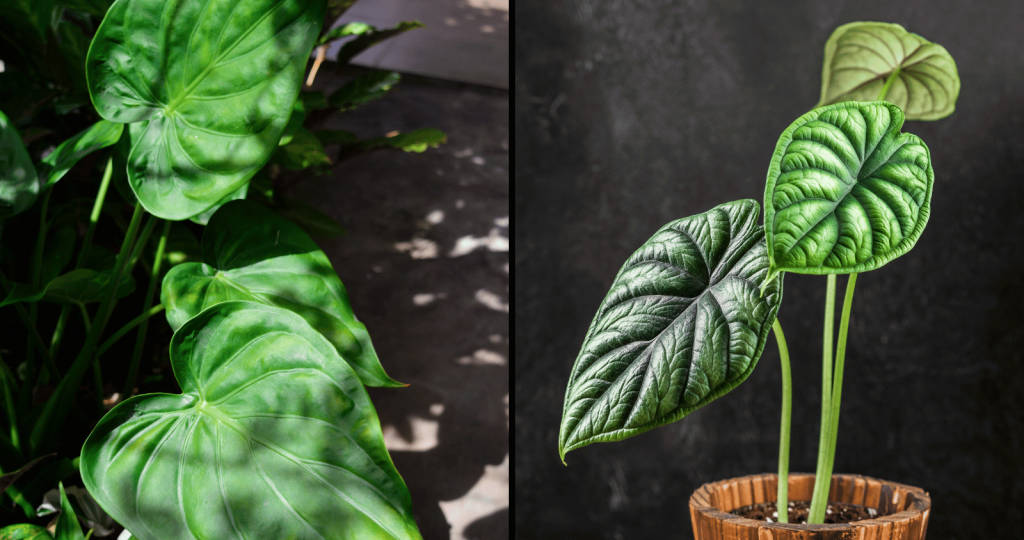
Sunlight Requirements
Whilst they can thrive indoor, Elephant ears won’t thrive in a dark position in your house. Ensuring your Elephant Ears receive 4-6 hours of indirect sunlight daily is crucial for their well-being.
Signs of Insufficient Light
If your Elephant Ears is starting to grow smaller or paler leaves, is showing sluggish growth and even loosing leaves then it needs more light. Consider relocating them to a spot with more filtered light.
Providing the right amount of sunlight is essential for the healthy growth of Elephant Ears. In addition to their height, these plants also have large, striking leaves that require adequate light to thrive.
Where Is The Best Spot To Grow Elephant Ears… ?
Indoors
Elephant Ears commonly need 4-6 hours of light each day. This means they will likely need to be next to a large window to have success growing indoors. However, even a large window that doesn’t get direct sunlight might not be enough.
You will also need to be aware that elephant ears will grow towards the light. So, if you have a nice big window on one side of the room and no light on the other side, then the Elephant Ear will start to grow towards that window. This might end up looking a bit weird, so keep that in mind when choosing a spot for your Alocasia
So, while Elephant Ears can thrive indoors, placing them in a darker spot, like a bedroom, might not be the best idea. These plants prefer higher humidity levels and may not receive adequate light in a typical bedroom environment. They are better suited for well-lit living spaces with proper humidity levels.
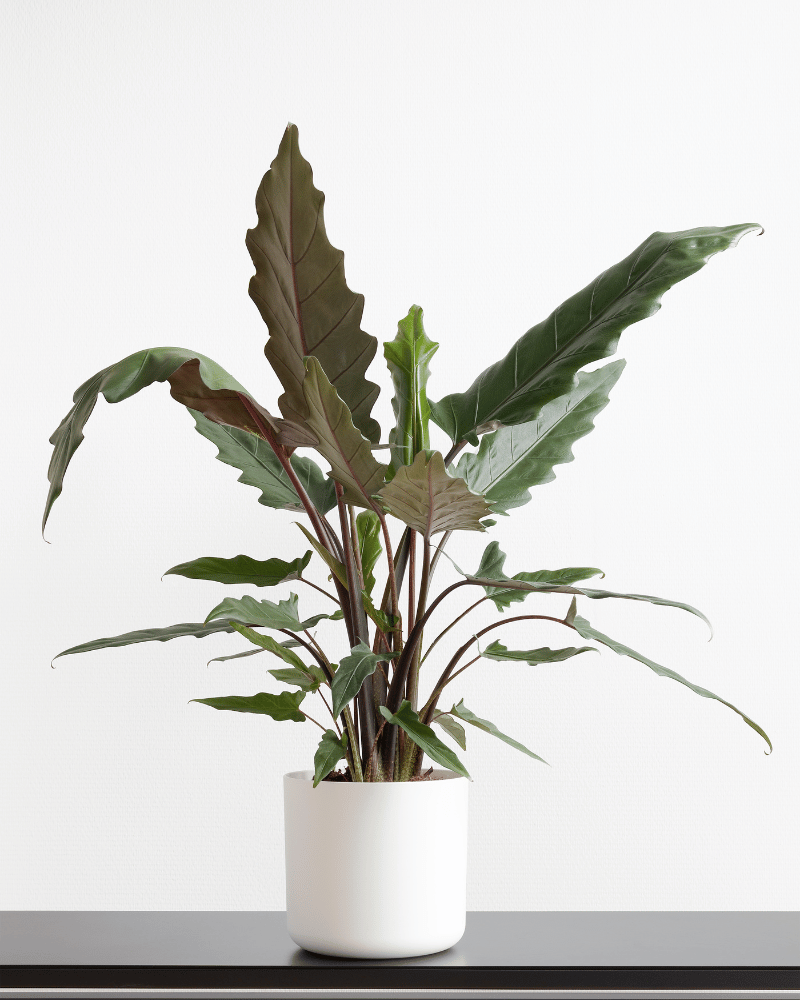
Can I Grow Elphant Ears With Artificial Light?
Technically, Yes. However, most indoor house lights do not emit enough light to support a plant this size. Outdoor LED lights might help but would need to be very bright.
If you have a dark position indoors, you will likely be unsuccessful in growing Elephant ears. It’s possible even with standard house lights directly above the plant. You can grow Alocasia with high powered LED. Even better, use dedicated grow lights. However, most people won’t want these types of lights inside their house.
On A Patio
Elephant Ears do really well in outdoor shaded areas like patios, pergolas, porches etc. If you can find a spot that gets the morning sun and avoids direct afternoon sun then you will likely be on to a winner. The only issue will be wind. You will need to find a spot that is no exposed to to regular high winds.
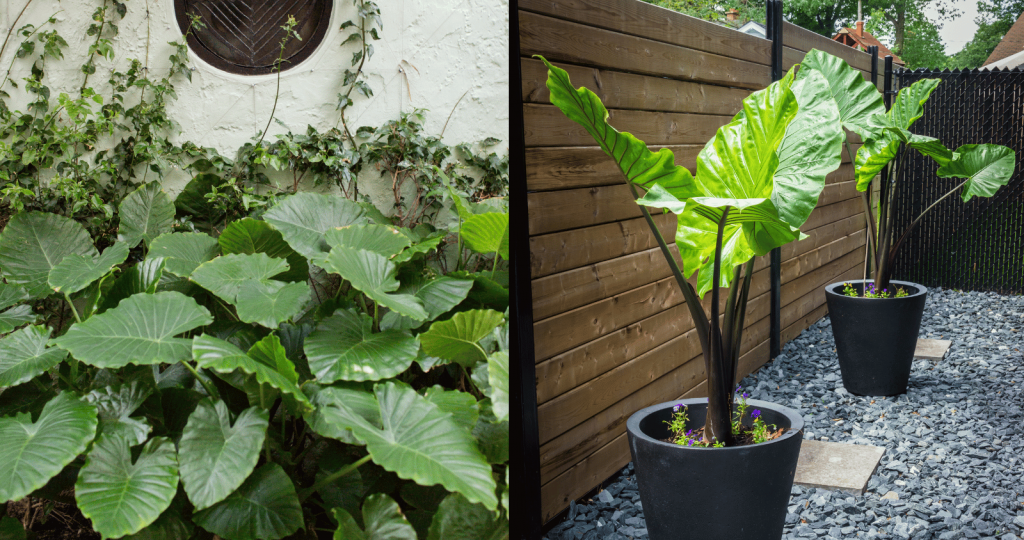
In The Garden
Alocasia elephant ears thrive in partial shade, making them ideal for gardens with dappled sunlight or areas that receive filtered light. They should be shielded from direct sunlight, especially during the scorching midday hours.
Planting Elephant Ears under the shade of larger tree is a great idea, as long as there is consistent dappled light coming through the tree.
Choose any location that provides a balance of shade and sunlight. Well-drained soil, with the addition of organic matter, this will create the perfect bed for your Elephant Ears to flourish.
Pots vs. Ground
While Elephant Ears can be grown in both pots and the ground, they tend to fare better when planted directly in the soil. The ground offers more space for the roots to spread and ensures stability, allowing the plant to reach its full potential.
I have personally had good success with Elephants Ears that where planted in larger pots, and that had soil that had good amount of compost.
Drought Tolerance and Watering Needs
Drought Tolerance
Elephant Ears (Alocasia) are native to tropical and sub tropical climates so they are not champions of drought tolerance, Elephant Ears appreciate consistent moisture. However, it’s essential to strike a balance, so avoide waterlogging the soil. Overwatering can lead to root rot and other issues, so it’s important to ensure that the soil is well-drained. To maintain the right moisture level, water your Elephant Ears when the top inch of soil feels dry to the touch. Additionally, adding a layer of mulch around the base of the plant can help retain moisture and prevent excessive evaporation.
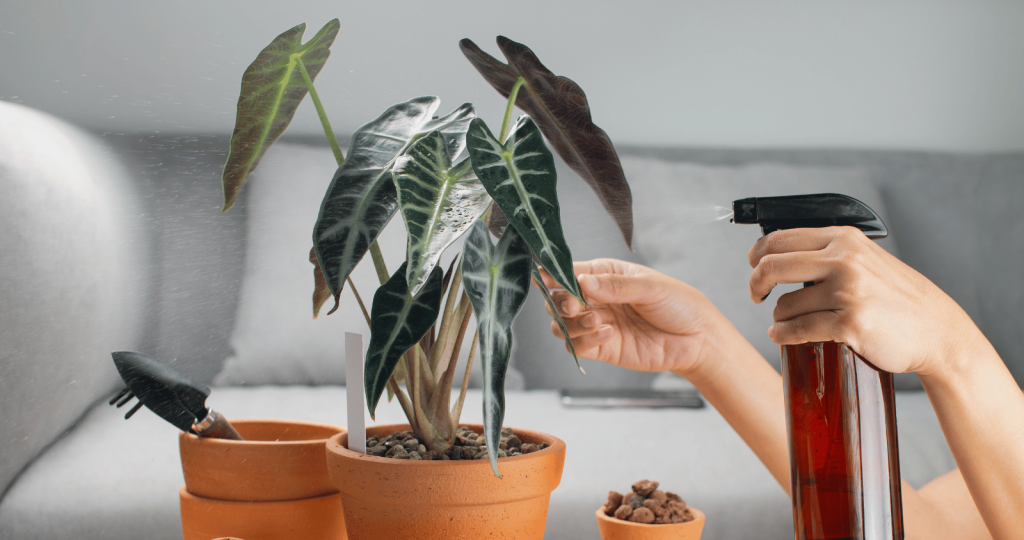
How Much Water Do Elephant Ears (Alocasia) Need?
On average, these plants need approximately 25-50 mm of water per week. One watering per week is great for most Elephant Ear varieties. Adjust based on your climate, soil conditions, and the size of your Elephant Ears.
If you live in a hot and dry climate, you will likely need to water your Elephant Ears more frequently to prevent the soil from drying out too quickly 2-3 times a week in these conditions. Conversely, if you live in a cooler and more humid climate, you may need to water them less often to avoid overwatering, so once a fortnight would better suit this climate.
It’s important to monitor the moisture levels of the soil regularly and adjust your watering schedule accordingly.
If your Elephant Ear plant gets too much water, it will let you know by “weeping” or dripping water from the tip of the leaf.
Growing in Water
While Alocasia can be propagated in water, growing them solely in water may not be ideal for their long-term health. They prefer a well-draining soil mix.
Overwatering Signs
If you notice yellowing leaves, wilting, “crying” water, or a foul smell, your Elephant Ears may be overwatered. Adjust your watering routine accordingly.
Is Misting Good For Elephant Ears?
While these plants appreciate humidity, misting might not be the most effective method. It’s better to provide indirect humidity through a humidity tray or by grouping plants together.
Pruning Elephant Ears – Alocasia
Frequency
Pruning is generally low-maintenance for Elephant Ears. Simply remove damaged or yellowing leaves as needed, allowing the plant to redirect its energy towards new growth.
Additionally, removing excessive growth can help promote better air circulation and prevent overcrowding, but is often not needed.
Best Time to Prune
If you are pruning to remove dead or damaged leaves then you can do this at any time of the year.
If you are pruning to shape a plant optimal pruning times are during the growing season, typically in spring or early summer, when the plant is actively producing new foliage. Pruning during this time allows the plant to recover quickly and encourages vigorous growth.
If you are in a cold climate it is important to avoid pruning too late in the season, as this can leave the plant vulnerable to cold temperatures and frost damage.
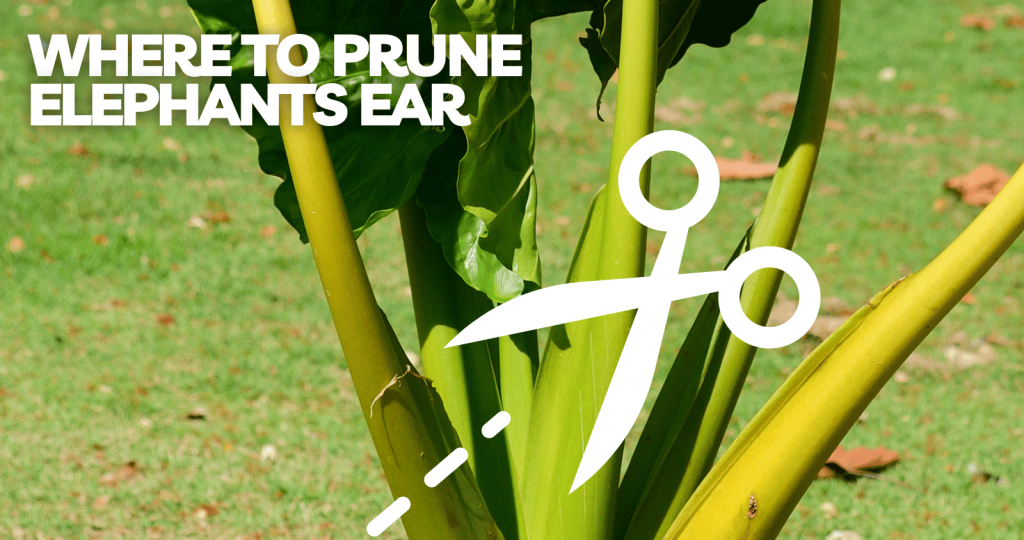
Pruning Tools
For a simple pruning session, all you need are clean, sharp pruning shears or secateurs. You do not need expensive tools as Elephant Ears are quite soft and easy to cut. If you are looking for some high-quality secateurs, here are two great options depending on your budget: option 1 and option 2. And if you’re also looking for some really good shears, here are two great options depending on your budget: option 1 and option 2.
Remember to sterilize your tools before and after use to prevent the spread of diseases. Additionally, it is recommended to have a pair of loppers or pruning saws for really large varieties of Elephant Ears or if you are doing a heavy reduction in size. These tools will provide more leverage and precision when cutting thicker stems. If looking for loppers, here are two great options: one avil lopper and one bypass lopper. If you are looking for a great folding saw, this is my recommendation.
It is also important to regularly sharpen your pruning tools to ensure clean cuts and minimize damage to the plant.
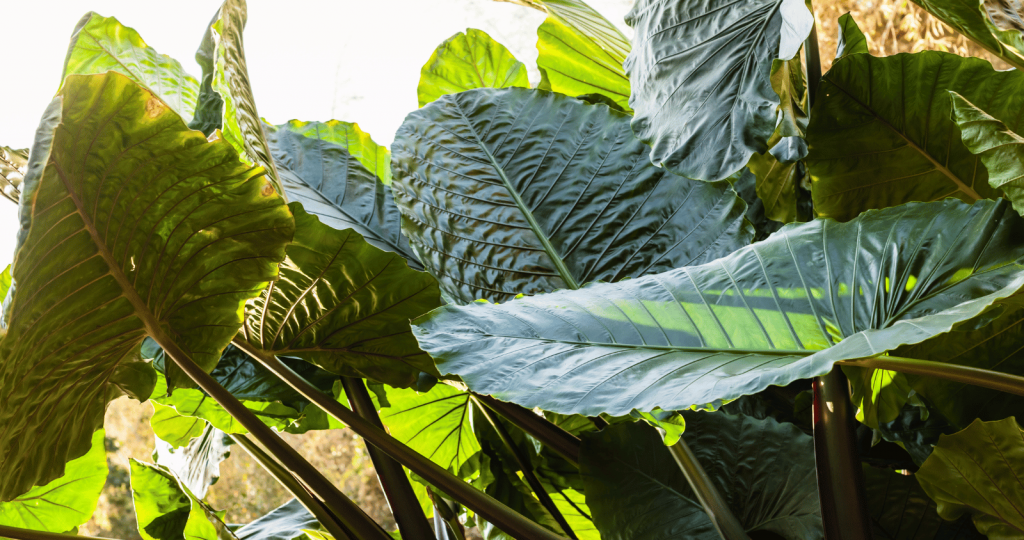
Growth Rate of Elephant Ears – Alocasia
Growth Speed
Elephant Ears are known for their rapid growth, achieving their full height in a single growing season under optimal conditions. Their large leaves can grow up to several feet in length within a few weeks. To support their fast growth, it is important to provide them with regular watering, fertilisation and to make sure your plant is getting enough light. Additionally, ensuring they have enough space to spread out and are not competing for space with other plants.
Annual Growth
Annual growth of Elephant Ear will depend on the variety.
On average, these plants can grow up to full size in a single year, making them an exciting addition to your garden’s transformation. Their rapid growth rate and impressive size make Elephant Ears a popular choice for gardeners looking to create a lush and tropical atmosphere. With proper care and attention, these plants can quickly fill in empty spaces and provide a stunning focal point in any landscape.
This also means that you can save money with Elephant Ears buy buying a smaller pot size as you know that in the right conditions it will grow quickly.
How to Accelerate Growth: Providing consistent care in terms of water, light, and nutrients will encourage faster growth. However, patience is key. We have specific tips on how to increase the growth of Elephants Ear at this part of the article.
How to get larger leaves on your Elephant Ear: We have written about this in more detail at this part of the article.
.
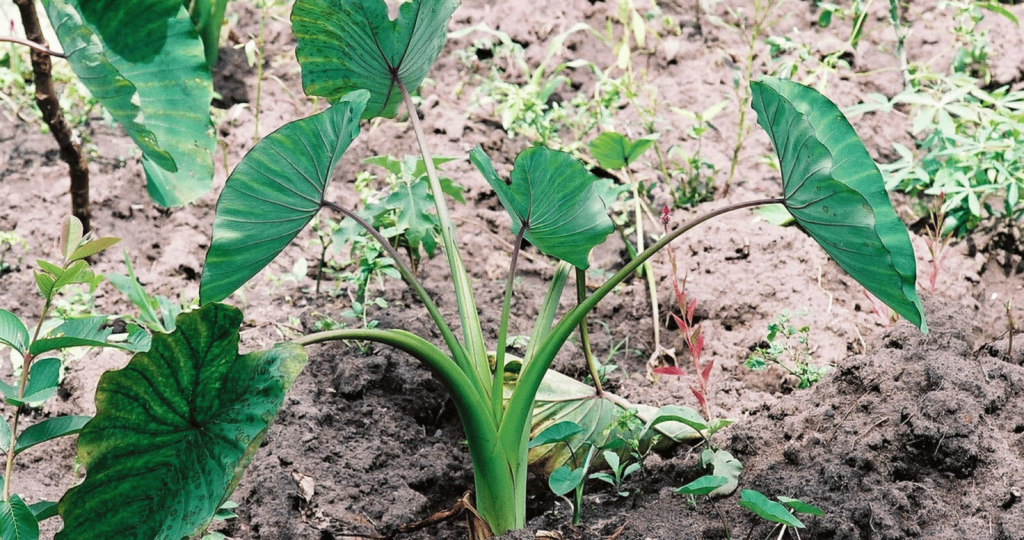
Ideal Soil Conditions For Elephant Ear
Best Soil Type
Create a cozy home for your Elephant Ears by providing well-draining, loamy soil enriched with organic matter. This helps ensure both water retention and proper aeration. Elephant Ears thrive in soil that is slightly acidic to neutral, with a pH range of 6.0 to 7.0 (to find out what your soil pH is use this kit). Adding compost or well-rotted manure to the soil can further improve its fertility and structure, creating the perfect environment for your Speed Elephant Ears to flourish. If you just need a small amount of compost, this is a great option, if you need a larger quantity the best option is to contact your local soil supplier.
Remember that Elephant Ears are native to tropical and sub tropical environments so the closer you can emulate those soil conditions the better the plant will grow.
Improving Sandy Soil
If your soil is sandy, enhance its water retention capabilities by incorporating organic compost and well-rotted manure, maybe even some bentonite clay. These organic materials will help to increase the soil’s ability to hold moisture, preventing it from drying out too quickly. Additionally, adding a layer of mulch on top of the soil can also help to conserve moisture and regulate temperature.
Improving Clay Soil
For clayey soil, boost drainage and aeration by adding organic matter like compost or aged bark. This will help to break up the compacted clay and improve the soil’s structure, allowing for better root growth and water infiltration. Additionally, incorporating sand or perlite into the soil can also help to improve drainage and prevent waterlogging in clayey soils. Here is where you can get perlite from.
Fertilising Elephant Ears – Alocasia
Do Elephant Ears Need Fertilising
In most cases the answer is yes. Especially if you have poor quality soil, or desire rapid growth.
Fertilizing Elephant Ears will support their rapid growth and vibrant foliage. Elephant ears are heavy feeders and require regular fertilization to provide them with the necessary nutrients for optimal growth. A balanced fertilizer with a higher nitrogen content can promote lush foliage, while a fertilizer with a higher phosphorus content can encourage blooming. It is important to follow the recommended dosage and application instructions to avoid over-fertilization, which can lead to leaf burn or other plant health issues.
Best Fertiliser
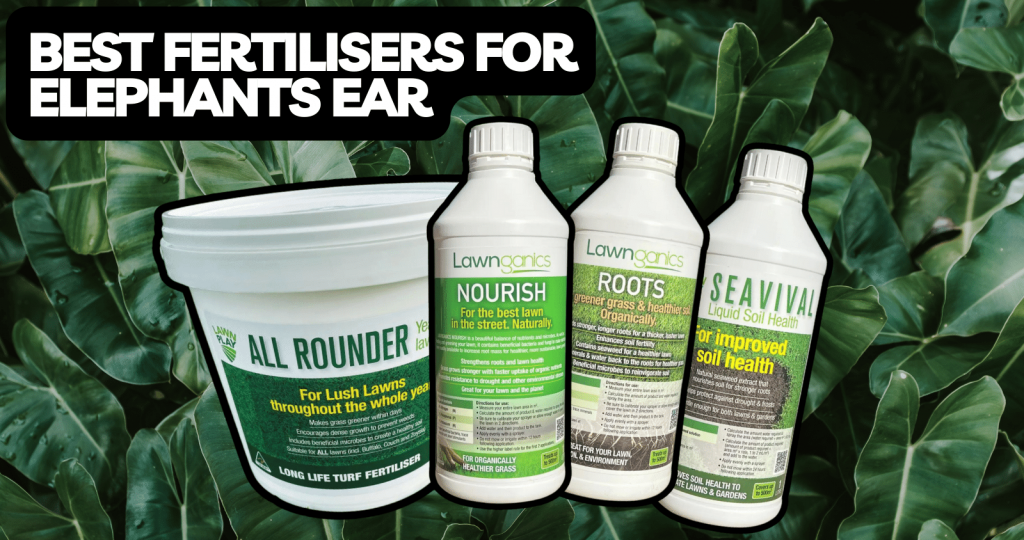
If you want rapid growth and health:
All Rounder is the fertiliser I would use, putting down one large handful for big plants, half a handful for smaller plants.
This fertiliser has two types of controlled release Nitrogen which will encourage new growth for 8-12 weeks, most cheaper granule fertilisers may only last 4-6 weeks. It also has a good amount of Potassium which helps with the general health of the plant and a huge number of trace elements, much more than a standard fertiliser has. In my opinion this is a much better rounded fertiliser than what you commonly get at large hardware stores.
Whilst this is marketed as fertiliser for lawns, don’t get too caught up in the marketing. Remember that lawns and Elephant Ears are both foliage plants, so deep green colour and healthy growth is the goal, this fertiliser will do both. This fertiliser will also work well with hedges and many other indoor plants.
If you want to maintain or enhance colour without too much growth:
If this is your goal then I would either use the All Rounder mentioned above at low application rates, or I would use a liquid fertiliser like Nourish is a great choice. I would apply 20-40ml in 1-2l or water per plant, depending on the size of the plant, applying once every month.
Nourish is an organic formulation that not only has the NPK you need but also beneficial bacteria and trace elements. This is a much more complete liquid fertiliser than what is commonly sold at bigger hardware stores.
Again, don’t get caught up too much in the marketing. Lawns and Elephant Ears are both foliage plants where green healthy leaf growth is the goal. This fertiliser can also be used with many other indoor plants
If you want to encourage root growth and frost tolerance:
Seavival and Roots are the way to go. You can read in depth about them at the links above but they are very high quality products that are, in my opinion, better choices than what you commonly get at larger hardware stores. These products, as far as I am aware, can be applied on any plant including lawns, indoor plants and ornamental garden plants.
I would apply Seavival at 5-10ml per plant and Roots at 20-40ml per plant, apply both together in 1-2 litres of water per plant. Apply once a month.
Nourish, Seavival and Roots can all be applied together in the same watering can to achieve all you plants goal in one hit.
How to get larger leaves on your Elephant Ear:
To encourage larger leaves, ensure your Elephant Ears receive adequate sunlight, water, and nutrients. A well-cared-for plant is more likely to produce impressive foliage. The fertilising and watering processes described above will go a long way to helping your Elephant Ears grow massive leaves.
How to get more flowers:
While Elephant Ears are not known for their showy flowers, some varieties may produce inconspicuous blooms. Nevertheless, the primary appeal lies in their large, dramatic leaves. Regardless, if you do want to encourage flowers a fertilser with high levels of Phorphorus, like this one here, will likely achieve this. However, I personally haven’t tried to encourage flowers on any of the Alocasia, so this is a theoretical answer based on role Phorphorus plays in plants.
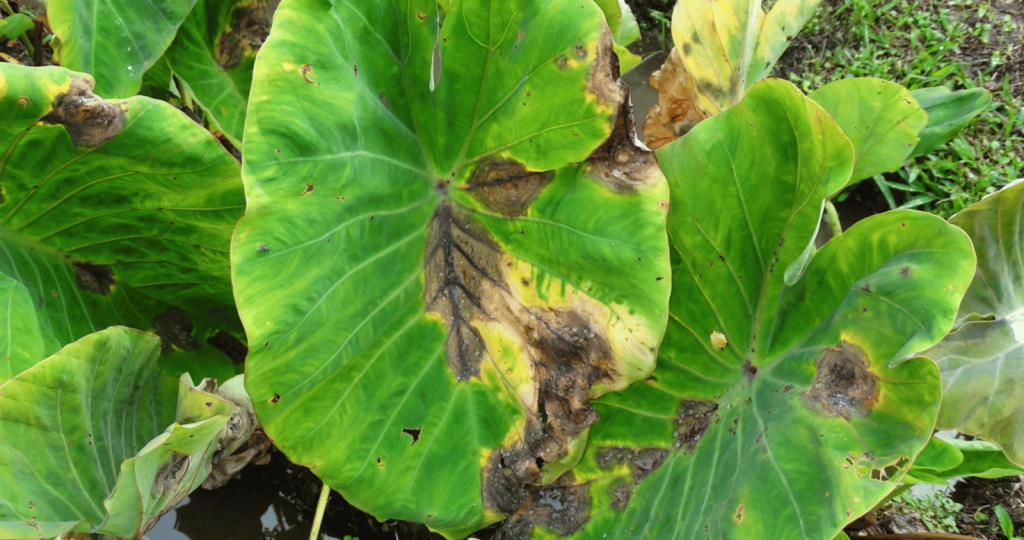
Common Pests and Treatments
Keep an eye out for common pests such as aphids, spider mites, and mealybugs. Treat infestations promptly with insecticidal soap or neem oil, and regularly inspect your plants to catch issues early. Regularly inspecting your plants can help identify any signs of pest infestations early on, allowing for prompt treatment with insecticidal soap or neem oil (here is where you can find some neem oil). Additionally, practicing good garden hygiene, such as removing dead plant material and keeping the area clean, can help prevent pest infestations in the first place.
Common Diseases and Treatments
Prevent root rot by ensuring proper drainage and avoiding overwatering.
If fungal infections occur, the first thing to understand the constant leaf wetness is a common cause for fungal diseases. You can reduce how long your leaves are wet for by reducing your watering days, changing from sprinklers to drippers for your irrigation and increasing ariflow through the plant by pruning. If neded apply fungicides as directed.
In addition to these measures, it is important to avoid overcrowding plants, as this practice can help prevent the spread of diseases. Furthermore, maintaining healthy soil through regular fertilization and proper pH levels can also boost plant immunity against common diseases.
What are the most common Mistakes with Elephant Ears – Alocasia
- Overwatering: Elephant Ears are prone to root rot, so allow the soil to dry slightly between watering sessions.
- Insufficient Light: Placing them in low-light conditions can result in stunted growth and pale leaves.
- Poor Soil Conditions: Neglecting soil quality can hinder the plant’s growth; amend the soil as needed.
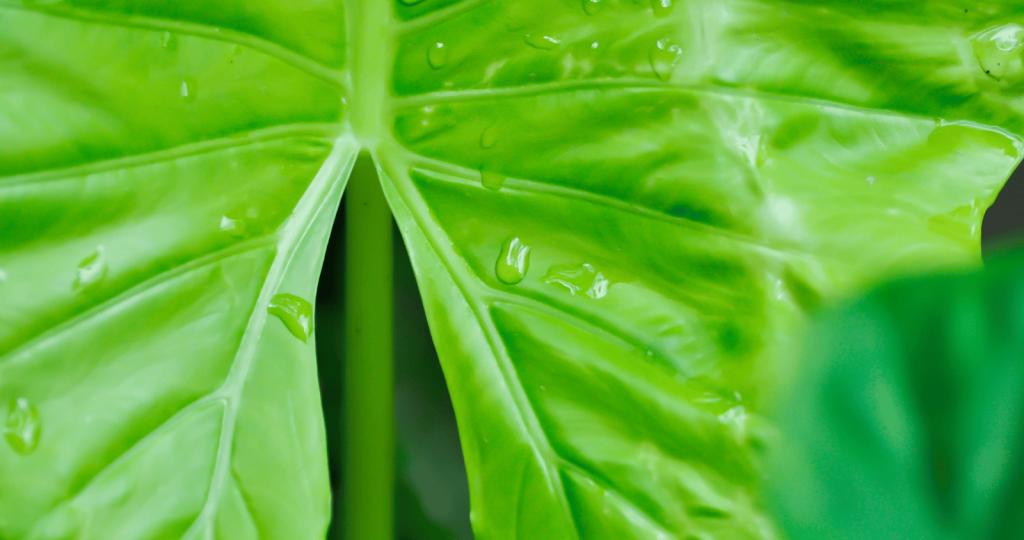
Why are my Elephant Ear leaves dropping?
Leaf drop can occur due to overwatering, underwatering, or environmental stress. To make sure your plant stands beautiful and strong throughout the year, this product helps the plant become more resilient to stress.
Overwatering: if the soil is constantly wet then this will cause issues. Either reduce your watering frequency (if using irrigation or hand watering) or aerate the soil to allow air in to dry out the soil. You can do this with a garden bed with a garden fork, push all the way into the soil and give a little wiggle to ope up the soil, doing this 3-4 times around the plant should make a difference. If in a pot do the same technique with a thin piece of metal or even an old butter knife.
Underwatering: You know that this is the issues if the first inch of soil is dry only a day or so after watering. If this is the case simply increase the amount of water the plant is getting and/or the frequency of watering. Elephants Ears will need 25-50mm of water each week depending on the climate and size of the plants.
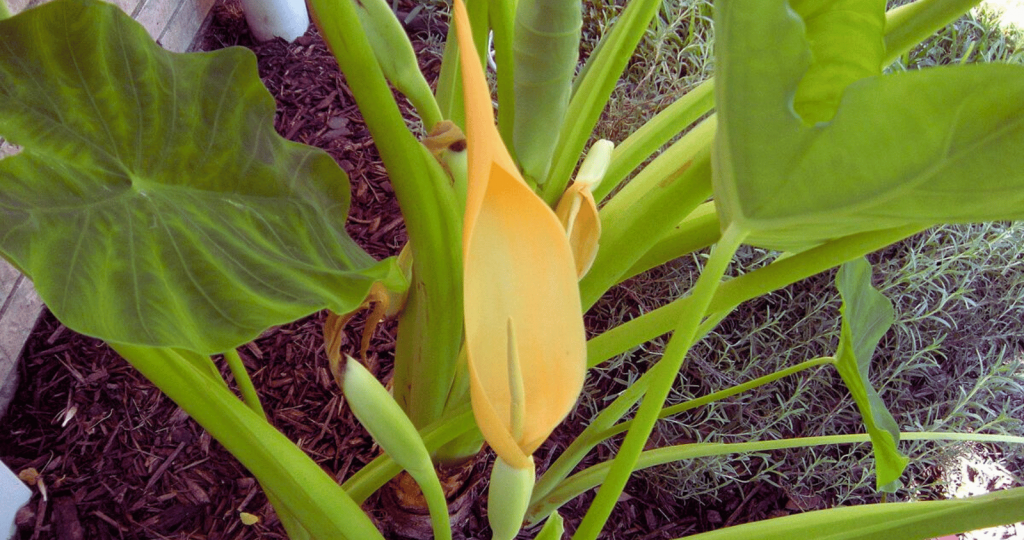
Tips for a Happy Elephant Ear
Unhealthy Habits: Avoid exposing your Elephant Ears to extreme temperatures, drafts, or sudden environmental changes. Maintain a stable environment to prevent stress.
Why is my Elephant Ear leaking water?: The phenomenon of “crying” in Elephant Ears refers to the natural process of guttation, where excess water is expelled from the edges of the leaves. It is a normal occurrence and not a sign of distress.

How to propagate Elephants Ear.
Can you Grow from Cuttings: Yes, you can grow Elephant Ears from cuttings. Select a healthy stem with a node, plant it in well-draining soil, and keep it consistently moist. A rooting hormone may also be beneficial. We recommend using this rooting hormone to help root formation in your cuttings.
Propagating from a Leaf: Alocasia can be propagated from a leaf, but it may require more time and attention. Choose a healthy leaf and place it in a mixture of soil and perlite until roots develop.
Medicinal Properties, Edibility, and Safety: Elephant Ears Unmasked
Medicinal Benefits Of Elephants Ear?: While Elephant Ears are not known for medicinal properties, they are admired for their air-purifying abilities.
Are Elephants Ears Leaves Edible?: Contrary to their striking appearance, Elephant Ear leaves are not edible and can be harmful if ingested. It’s crucial to keep them out of reach of curious pets and children.
Safety Measures: Alocasia plants contain compounds that can cause skin irritation. Handle them with care, and wash your hands after touching the leaves.
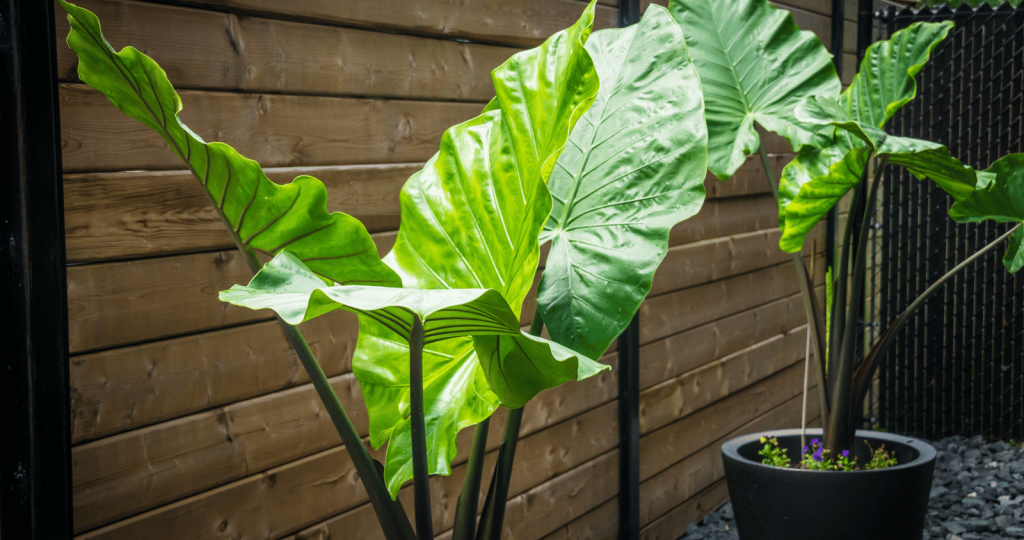
Pros, Cons, and Common Questions: Weighing the Elephant Ears Experience
Pros:
- Aesthetic Appeal: Elephant Ears add a tropical touch to any garden.
- Air Purification: They contribute to a healthier environment by purifying the air.
Cons:
- Toxicity: Alocasia plants can be toxic if ingested or if their sap comes into contact with the skin.
- Specific Care Requirements: Elephant Ears demand attention to their unique needs.
Common Questions:
Toxicity Concerns: Yes, Elephant Ear plants are toxic. Handle them with care and keep them away from pets and children.
Alocasia vs. Elephant Ear: Yes, Alocasia and Elephant Ear are often used interchangeably to refer to plants in the Alocasia genus.
Skin Sensitivity: Alocasia plants can cause skin irritation due to oxalate crystals. Wearing gloves while handling them is advisable.
Fragrance Facts: Elephant Ear plants are not known for their distinctive scent. Their allure lies in their visual appeal rather than olfactory sensations.
